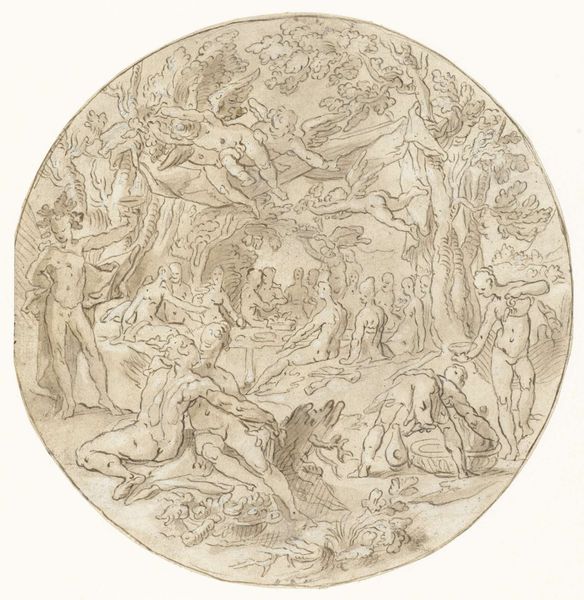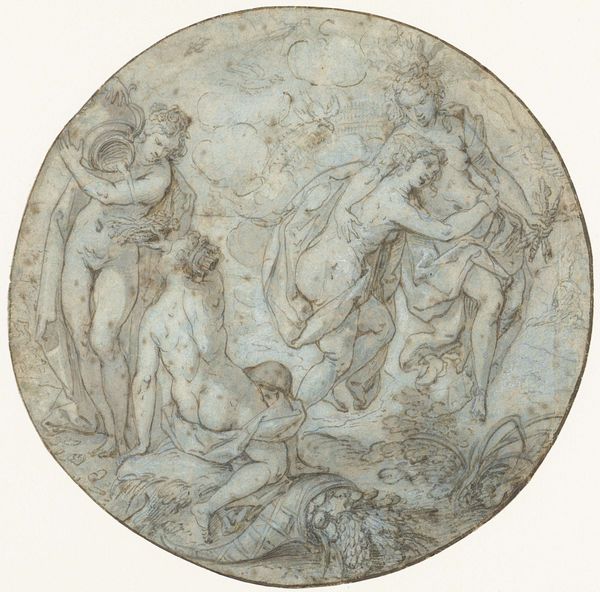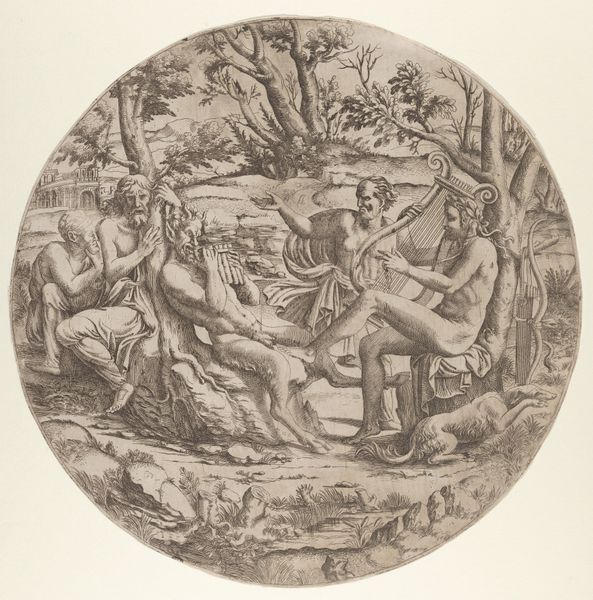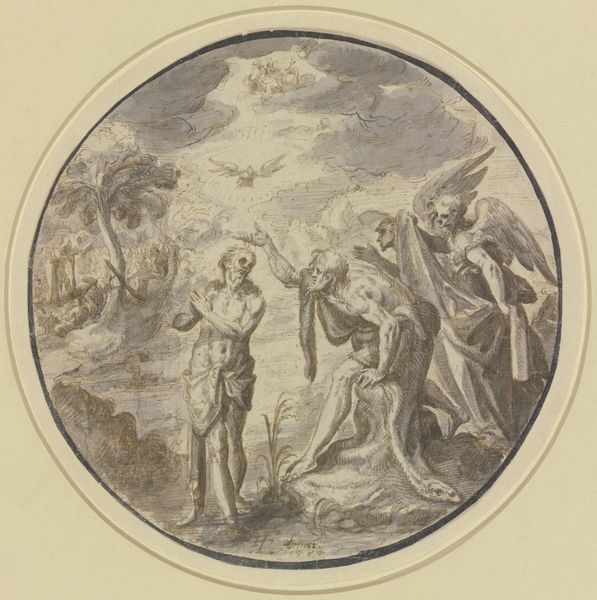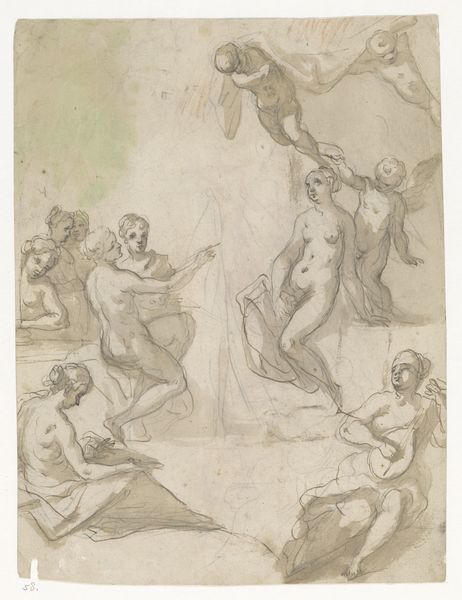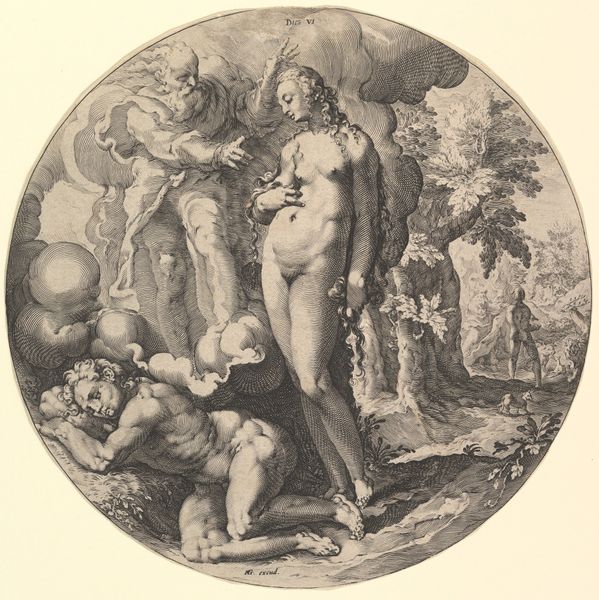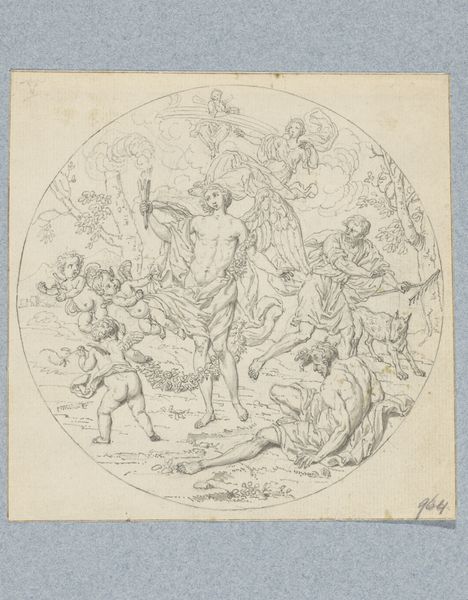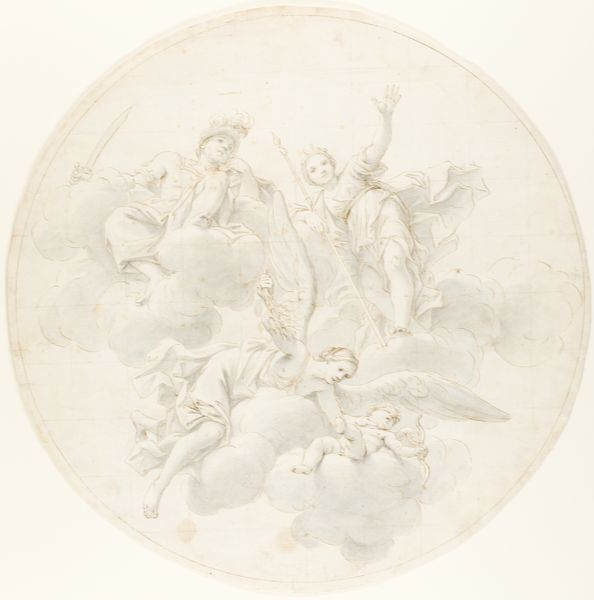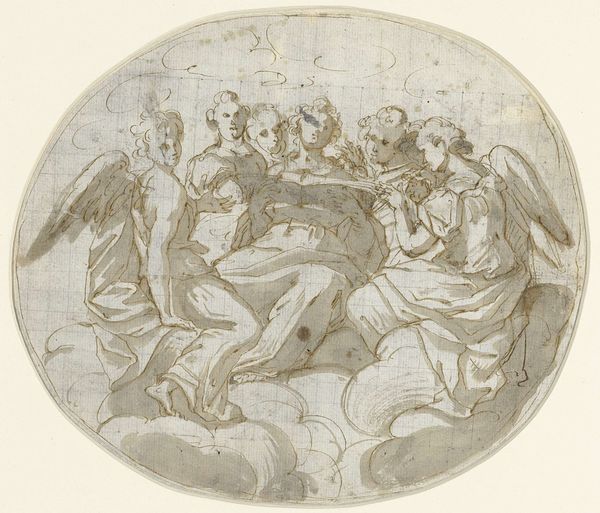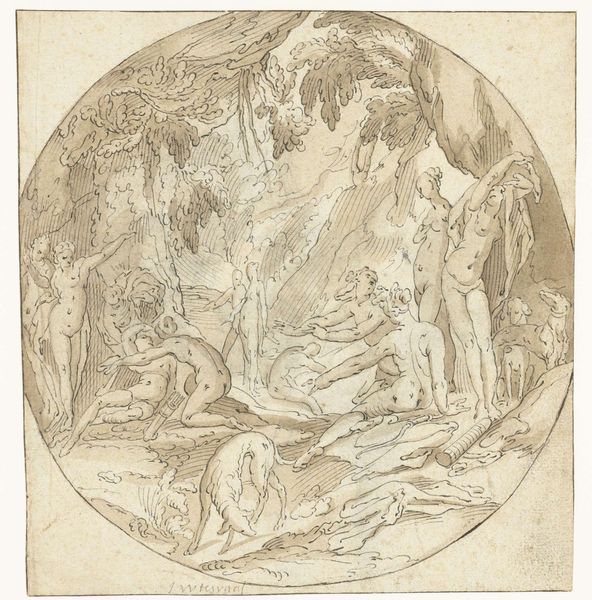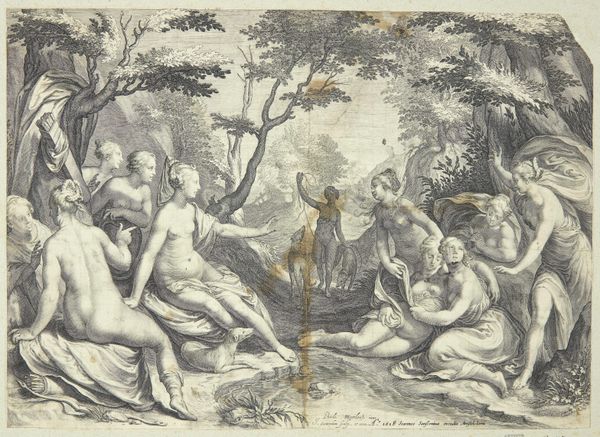
drawing, print, ink
#
drawing
#
ink painting
# print
#
figuration
#
11_renaissance
#
ink
#
history-painting
#
academic-art
#
nude
#
male-nude
Dimensions: diameter: 7 11/16 in. (19.6 cm)
Copyright: Public Domain
Curator: What strikes me immediately is the stark contrast between the resurrected figures and the skeletal remains at their feet; a poignant visual dichotomy. Editor: Indeed, it is a somber yet hopeful image. We're looking at "Ezekiel in the Valley of the Dry Bones," a work from the late 16th to early 17th century, crafted with ink on paper. It is currently held at the Metropolitan Museum of Art. Curator: The choice of ink is fascinating here. It lends a quality of ethereality to the resurrected bodies, while the bare ink creates an immediacy when conveying the crude reality of bones and decay. What sort of statement can be read from the process and materials themselves? Editor: The medium, printing, in turn made the image repeatable, therefore, the message was important enough for Georg Pecham to create multiples. The layering of ink suggests an iterative process of building form from chaos, echoing the biblical narrative itself. The revival of bodies from disparate skeletal parts, created on mass and disseminated for broad distribution. Curator: I'm compelled by the implied movement here— the flow of bodies arising to different extents of reanimation as rays of light fall on each form. The prophet Ezekiel stands powerfully centered, mediating between God and the awakening souls. What emotional and psychological states are conjured as they become whole again? Editor: It's a testament to the laborious act of artistic interpretation. Pen and ink are basic, readily available means; the artist here echoes the original creation. They serve as tools for visualizing both physical and spiritual restoration. Curator: Absolutely. The artistic rendering becomes part of the ongoing narrative, continually reinterpreting the story across centuries. I also see connections between this vision of collective restoration to broader spiritual and communal ideals. Editor: And considering its tangible form, the way that visual interpretation took root and evolved within religious life... it adds a deeper appreciation. Curator: Thank you for lending some of that appreciation into our understanding. Editor: A truly enlivening dive; one is sure to find much to uncover in the tangible.
Comments
No comments
Be the first to comment and join the conversation on the ultimate creative platform.
